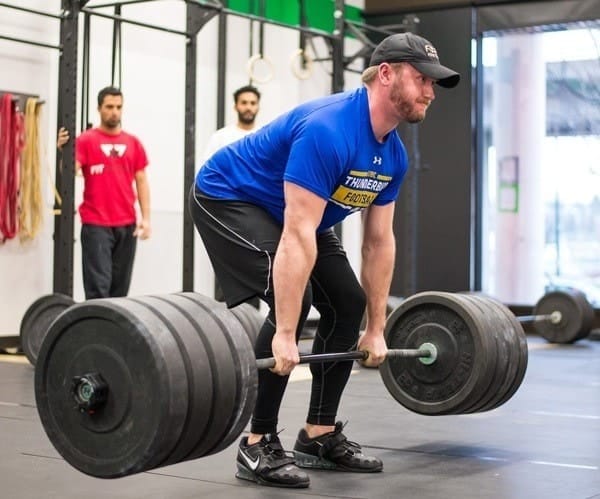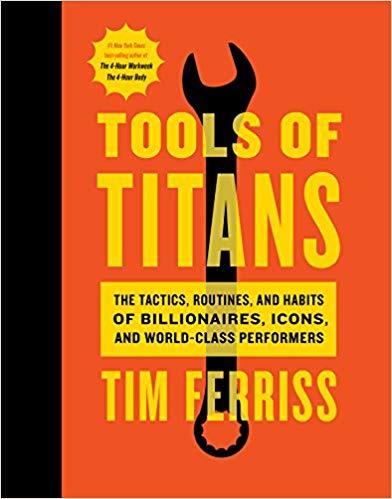Fuel Exponential Combat Arts Growth: The Power of SMART Goals
Combat Arts Strength and Conditioning: Achieving Peak Performance is built on a great conditioning program. Which is a sweet science consisting of sufficient stimulus, enough rest, proper programming, periodization and a plan with defined physical fitness goals. Basically, periodization means to systematically plan out athletic or physical training with the intention of achieving best possible performance by a certain time, for example, an important competition.
In periodization, different aspects of the training program will be cycled through during a specific period in order to be in optimum physical condition for that competition. Improving your conditioning is about more than just training as much as you can, as hard as you can. If it were that easy, we wouldn’t see professional athletes ‘gas-out.’
But first comes establishing baseline. The martial artists needs to establish a clear awareness of physical conditioning.
A conditioning program for a mid-forty year old martial artist who’s been sedentary for most of their adult life is going to look much different than a conditioning program of a mid-twenty year old MMA professional, who’s training full time. This seems obvious and logical, but many people miss this point, and push themselves full tilt into a program too intense, or the reverse, aren’t pushing hard enough.

Source: startingstrength.com
Before the fun and work can begin, a baseline needs to be established, then a plan made on where we want to take our training. This will give us a measure to compare against and track progress, and keep us accountable.
How S.M.A.R.T. Goals Elevate Your Combat Arts Performance
The S.M.A.R.T framework, respected across domains from MMA to Karate, provides a strategic approach to achieving your desired outcomes. This compelling acronym encapsulates Specific, Measurable, Achievable, Relevant, and Time-bound targets that direct your path to success.
In this context, Specific goals eliminate ambiguity, Measurable objectives enable progress tracking, Achievable aims foster continual growth, Relevant goals ensure focus on the larger objectives, and Time-bound targets maintain sustained momentum.
Andre Pederneiras, a distinguished MMA coach, is a prime example of someone that leverages S.M.A.R.T goal setting to drive results. The measurable and specific goal he set for his fighter, Jose Aldo, was to "Increase takedown defense by 25% within three months." This realistic and pertinent objective significantly enhanced Aldo's performance in the octagon.
Your Roadmap to Success: Key Considerations
When setting smart goals for combat arts strength and conditioning, several key considerations should be taken into account. Firstly, it is crucial to assess the individual's current physical condition, including their strength, endurance, and flexibility, in order to establish a baseline and identify areas for improvement. Secondly, workout recovery time must be factored in to ensure adequate rest and prevent overtraining, which could lead to injury or performance decline.
Realistic goals should be set, considering the individual's abilities and the time frame available for training. Finally, creating an action plan and establishing a routine that incorporates structured workouts, rest days, and proper nutrition is essential for consistent progress and long-term success in combat arts strength and conditioning.
Critically Assess Fitness Levels
There are several ways to establish a baseline for a desired level of martial and aerobic fitness. Here are a few examples:
Track Resting Heart Rate Upon Waking
A normal adult Resting Heart Rate (RHR) is between 60-100 beats per minute (BPM). Athletes may see a training adaptation drive their RHR under 60 BPM, indicating very efficient heart function and cardiovascular health. Elite RHR are defined as under 50 bpm. Establishing this baseline RHR will allow you to keep track of this measure and see how it responds to your training load. You can easily measure your RHR with a heart rate monitor or by taking your pulse.
Place your index and middle fingers on your neck to the side of your windpipe. This is the carotid artery, and one of the easiest places to reliably feel the pulse. Once the pulse is located, watch a clock, phone, or timer and count the number of pulse beats in 10 seconds. Next, multiply this number by 6. That will give your heart rate per minute. For example, if you feel 10 pulse beats in 10 seconds, multiplied by 6, means your pulse is 60 beats per minute.
Timing a 1.5 Mile Run
Another strategy to assess your aerobic fitness is to record your 1.5-mile (2.4-kilometer) time. This is called the “Cooper run test,” and was developed by Dr. Ken Cooper in 1968. It is a simple running test of aerobic fitness and is widely accepted as a gold standard for endurance. This is a very simple and effective way of tracking progress and seeing where you stack up. Below is a table of times that are generally accepted as good indicators of aerobic fitness levels. A better time for your sex and age indicates a good level of aerobic fitness. A slower time indicates the need for some work and improvement.
Good fitness results based on timing of 1.5-mile run
AGE | FeMale | MALE |
|---|---|---|
18 to 24 | 13 min | 11 min |
24 to 34 | 13.5 min | 11.5 min |
34 to 44 | 14 min | 12 min |
45 to 54 | 16 min | 13 min |
55 to 64 | 16 min | 13.5 min |
65+ | 17.5 min | 14 min |
AGE | 18 to 24 | 25 to 34 | 35 to 44 | 45 to 54 | 55 to 64 | 65+ |
|---|---|---|---|---|---|---|
FEMALE | 13 min | 13.5 min | 14 min | 16 min | 16 min | 17.5 min |
AGE | 18 to 24 | 25 to 34 | 35 to 44 | 45 to 54 | 55 to 64 | 65+ |
|---|---|---|---|---|---|---|
MALE | 11 min | 11.5 min | 12 min | 13 min | 13.5 min | 14 min |
What Does Your Body Want? Let Us Help You Set Your Goals and Achieve Them!
Track Your Recovery
A simple but very effective way to test fitness levels is to monitor recovery from a particular bout of exercise. Good recovery is synonymous with good cardiovascular health, so tracking recovery, or how long it takes your heart rate to normalize, is a great way to monitor progress.
This method is easy but requires a hear rate monitor or excellent pulse taking skills. One simple way of monitoring heart rate recovery is using this formula: Heart Rate at the end of a bout of exercise minus Heart Rate after 60 seconds of rest equals Heart Rate Recover.
Keep these results consistent by using the same exercise every time, along with intensity of effort. Use an exercise that is easy to track and scale. For example, do 25 burpees, or a 30 second all out 1-2-1-2 combination on the heavy bag. Over time, heart rate should lower during a 60 second rest.
Once it consistently clocks in lower than it was at the start of the training block or program, that is proof of improvement. Use a notepad or track your results on your phone doing the same exercise, for the same time duration, at consistent intervals.
Retest every 4-6 weeks to allow for sufficient training adaptation to occur.
Design a Program That Will Achieve Results
Tracking is important, as it allows seeing where strides are being made. The rubber hits the road on how hard you train. Execute and train accordingly in order to see performance increase over time. Formulate an appropriate plan to keep progressing steadily, achieving desired outcomes, not over-training, stalling, or under-training.
Consider Your Goals

What are your goals? Improve cardio? Lose fat, add muscle, get ripped? Become more flexible? Do you want faster hand speed or better hip throws?
Align goals with a training plan that will ensure achieving optimum levels of desired fitness. If losing body fat and building muscle are the top two goals, design a plan around those two requirements.
For instance, create a plan that includes powerful muscle building elements, HIIT aspects (alternate intense high level activity with lower levels), stretching, along with low to medium level aerobic activities for a definite amount of time each week, such as 8 hours a week of intensive martial arts practice.
An advanced martial arts class is ideal for this type of plan. This plan alone would meet above requirements, over a time of 6 months to 2 years, depending on original fitness levels, i.e., needing to lose 100 pounds looks different than working back into shape after a month or two off.
If faster results are desired, add in 2 to 10 miles a week of jogging, 3 to 6 hours a week of yoga or swimming, and/or 2 or 4 sessions a week of weight lifting.
Dislike the idea of any extra ‘cardio’ that isn’t done on a tatami? That is fine, too. Find extra ways to get in your sessions using your desired art. For example, speed drilling, hitting the heavy bag, shadow boxing on the beach. The possibilities are numerous and only limited by imagination.
These plan examples illustrate just how easy it can be to incorporate several required elements into one solid, very workable plan that minimizes chances of burnout, over or under-training, while leaving room for mixing it up. The beauty of this becomes clear when winter or summer come and you want indoors or outdoors more, friends and family visit, or boredom sets in.
These examples show how simple it can be to achieve max results with plenty of effort, sure, but with massive variety, and no tedium. Simply understand what each type of exercise does to the body, muscles focused upon, time required to maximum effect, and they become like pieces on a chess board and you’re always checkmating.
Restore Lost Motivation, Renew Your Goals, and Set Your Own Pace! Let Us Motivate You!
Listen To Your Body
Some people train like demons at first, going 6 or even 7 days that first week or two, until suddenly just walking across the room gets painful. This is commonly observed in folks coming right off the couch who become obsessed with progress and seeing instant results. This isn’t such a bad thing if done right, and taking time off when needed.

If you've been working hard in the dojo, or dominating opponents before, now returning from time off because of injury, illness, or life issues such as major moves or job changes, new baby, parents, etc., one needs to lean in cautiously but steadily, the tiger on the hunt.
Aim high, ramp it up ambitiously, but listen when your body says stop, take a day off, do the long soak, bike ride in the country, meditate or relax with music.
Plan out a regimen that fits schedule and time constraints. Take sufficient rest days. Don’t block out all the noise, and live the “no pain--no gain” mentality, as this all too often results in injury, burn out, and fatigue. And that means time off the mats.
Put It Into Action
The most perfectly designed conditioning plan means nothing if it isn’t carried out. All the good intentions don’t manifest in gains if they aren’t put into action. The best plan won’t work if it doesn’t realistically take into account timing, availability, possible conflicts or shifts needed, and then, massive action. When it comes down to being successful--it’s all about movement and commitment. . Not just once, not for a week, or a month. This is a lifestyle, baby! You get there—you stay there. increase your chances
Develop A Routine
Win the morning, win the day. This is something popularized by New York Times best seller, Tim Ferriss, in his book Tools of Titans.
The author interviews the leading figures from all different lines of work. One of the common themes amongst successful people, from bankers to elite level MMA athletes is the importance of a good morning routine.
This routine is unique but sets the tone for the day. Whether it is starting the day with 50 burpies or jump-ups, 200 kicks, gratitude journaling and a set of bodyweight squats, or 40 pushups. Decide what wins the morning and sets the tone for the rest of the day.

It’s much easier to feel committed and succeed with goals when massive action makes you win the morning. Winning the morning makes you win the day. Win days consistently, and see amazing achievements.
Track And Monitor
Success is intrinsically motivating. Success can manifest in many ways. It can be proof of fat loss as clothes fit looser, or dropping numbers on the scale, faster, easier sprints, quicker recovery, powerful sparring. Don’t miss out on this amazing confidence booster-- track changes and improvements.
Assess critically. Make notes, track times, and regularly weigh in. See the fruits of your labor and improvements. Make tweaks and changes to your routines until it works good as envisioned.
How to Establish SMART Goal Setting
SMART stands for Specific, Measurable, Attainable, Relevant, and Time Based focus. Time tested SMART goal setting principles were explained by Mike Dolce, retired MMA fighter, cast member on The Ultimate Fighter season 7, turned top MMA coach, when he said:“It’s about goal-setting and achieving” when it comes to successfully advancing as a martial artist.
S.M.A.R.T. goal setting guidelines will help ensure that goals become a reality.
STEP 1: (S)pecific Goals for Superior Performance
(S)pecific
Define Your Objectives: The goal has to be clear and resonate with you, otherwise it fails before even starting. A good practice is to use the 3 W’s to guide goal setting. What do I want to accomplish? Which resources or limits are potentially involved? Why is this important? When there is a good enough why, the ‘how’ can be endured.
As the legendary Boxing coach Cus D'Amato advocated, "The more you're specific, the more you get what you want." An example of a specific goal in MMA could be, "I want to increase the precision of my kick by 20%."
Need more guidance on Combat Arts Strength and Conditioning Program Design? Consider reading our cornerstone article, "MMA Strength and Conditioning: Achieving Peak Performance."
STEP 2: (M)easurable Milestones in Strength and Conditioning
(M)easurable
Quantify Your Goals: Tracking progress towards goals. Re-test every 4-6 weeks. Established a baseline to test from. Stay accountable by committing to testing and re-testing at established internals. For example, time a 1.5 mile run at the beginning of each month.
Every seasoned trainer, from Boxing's Freddie Roach to MMA's Greg Jackson, recognizes the crucial role of measurable goals. For instance, "I aim to extend my Wrestling hold for an additional two minutes" provides a measurable target.
STEP 3: (A)ttainable Aspirations in Combat Arts Training
(A)ttainable
Keep It Real: If one is afraid of heights, best not to decide skydiving is a goal. However, becoming a black-belt is attainable—at almost any age—once again, depending on overall conditioning. Setting lofty goals is a great idea. Set goals that push and challenge, but make them attainable, too. Best not to set up for failure. Fighting in the octagon when retired and overweight is not the best plan, for instance, but getting a black belt and becoming an excellent sparring partner is attainable.
Setting goals that balance ambition with realism is essential in Combat Arts. Noted BJJ coach John Danaher frequently stresses the importance of setting achievable goals to foster continuous improvement and avoid burnout.
STEP 4: (R)elevant Goals for Tailored Training
(R)elevant
Align with Broader Objectives: If the goal is to become a Brazilian jiu jitsu black belt, it wouldn’t make much sense to spend half the time practicing Capoeira or Muay Thai. Similarly, if the goal is to get explosively strong when wrestling, maybe don’t choose running, but rather, a well formulated weight lifting program would achieve optimal results.
All goals should be relevant to your broader objectives in Combat Arts. If you are a Karateka aiming to improve your Kata, you might set a goal to "Perfect the Heian Shodan Kata by executing each move flawlessly."
STEP 5: (T)ime Based Targets for Optimized Training
(T)ime Based
Set Deadlines: Stay accountable and keep forging forward towards goals by putting a time frame on it. This keeps motivation high and the encouragement to do what is necessary. This may look like making weight for an up coming fight, planning on getting a blue belt within two years, or committing to classes 4 times a week all next month. Put a time frame on goals, write them down, then complete them before the due date Psyche! Doing this massively increases chances of success.
Every successful coach, like UFC's Javier Mendez, promotes the idea of setting time-bound targets to maintain motivation and training focus. Whether it's improving your Boxing jab speed or enhancing your BJJ grip strength, defining a time frame boosts your commitment.
Avoiding Obstacles: Common Pitfall in Combat Arts Goal Setting
Certain common pitfalls in goal setting can be easily avoided. UFC coach Firas Zahabi cautions against setting vague goals, advocating for specificity. Similarly, it's critical to keep goals achievable and measurable, or risk demotivation and training stagnation.
Embrace the S.M.A.R.T Way: Start Your Goal Setting Journey Today
Adopting S.M.A.R.T goals in your Combat Arts strength and conditioning regimen paves the way for success. Being specific, measurable, achievable, relevant, and time-bound in your goal setting can unlock unprecedented potential in Boxing, Karate, Wrestling, Brazilian Jiu-Jitsu (BJJ), and Mixed Martial Arts (MMA).
Take the first step towards Combat Arts mastery today. Incorporate S.M.A.R.T goals into your strength and conditioning training, and witness the transformational power of intelligent goal setting. As the saying goes, "A journey of a thousand miles begins with a single step." Let that step be the setting of your S.M.A.R.T goals today, shaping a brighter future in Combat Arts tomorrow!

Frequently Asked Questions
How Do You Set Martial Arts Goals?
Setting martial arts goals begins with defining what you want to achieve, such as mastering a particular technique or reaching a new belt level. Break down your long-term goal into smaller, measurable milestones, then create a timeline to track progress.
What are the 4 Keys to Goal Setting?
The four keys to goal setting are specificity, measurability, attainability, and time-boundness. This means your goals should be clear and precise, quantifiable, within your capacity to achieve, and have a defined timeframe for completion.
How Do You Stay Motivated in Martial Arts?
To stay motivated in martial arts, regularly set and review your short and long-term goals, maintain a consistent practice schedule, seek regular feedback from your instructor, and try to engage with the broader martial arts community for support and inspiration.
What is Proper Goal Setting?
Proper goal setting involves making goals that are specific, measurable, attainable, relevant, and time-bound (SMART). It's crucial to write your goals down, create a detailed action plan, and regularly review and adjust your goals as needed.
